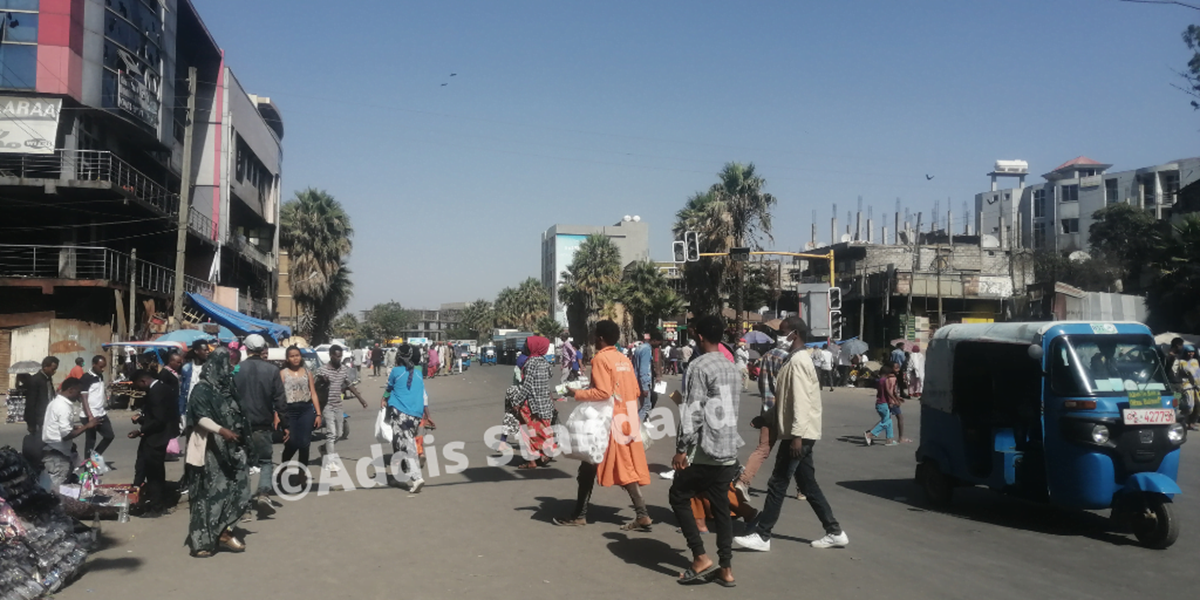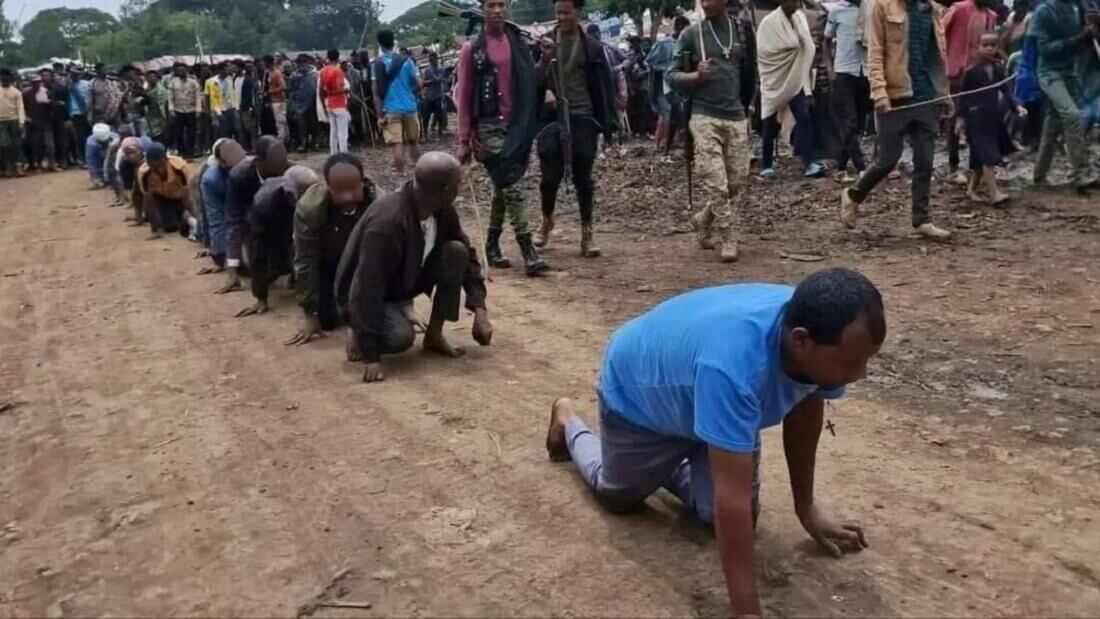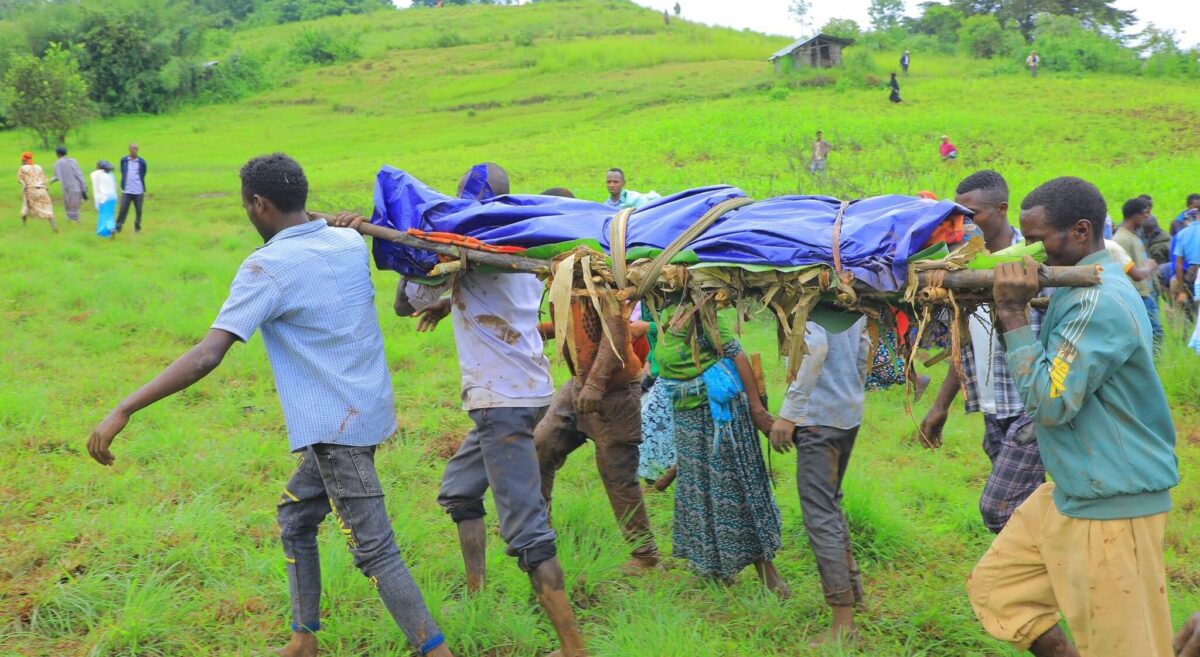Analysis: Massacre in plain sight; behind silent killings in Oromo special zone, Amhara region

By Dereje Gonfa @DerejeGonfa
Addis Abeba – The killing of civilians in the Oromo zone of the Amhara region continued long after the area was reclaimed by government forces in December last year, reports said. Addis Standard’s weeks-long investigation revealed that the residents of the zone were subjected to mass killing and imprisonment at the hands of government security forces. Although the local administration insists that the practices were measures taken against “terrorist groups”, the killing of civilians continues until the present while the government is readying to hold a national dialogue including with the TPLF.
According to sources on the ground, thousands of people were incarcerated and hundreds of people, including those under custody were summarily executed by government forces. Addis Standard received videos and pictures of bodies piled in a pit, claimed to be of residents of the zone from several woredas.
Segni Hassan, a resident of the zone who spoke to Addis Standard during the first few weeks the area fell under the control of government forces said, “Upon entering the area they executed several people at random. The execution site was guarded by security forces preventing us from collecting bodies.” He continued, “We don’t know the exact number of people. About four weeks later they collected the bodies with a bulldozer and buried them in a mass grave.”
“About four weeks later they collected the bodies with a bulldozer and buried them in a mass grave.”
Segni Hassan, resident
Segni stated that mass arrests were getting more intense prompting security forces to use government institutions, schools, and private compounds as make-shift detention centers. Some were taken to Shewa Robit town in the North Shewa zone while others were taken to a military camp in the Oromia region, according to him. “Most of the detainees were accused of supporting the TPLF and OLA capture the area. Some were even asked why they didn’t flee when Tigrayan forces arrived. That was their crime,” he recounted.
Another witness, a resident of Batte town whose brother was killed by local militia explained that government forces go from house to house arresting individuals then take them to other areas to kill them. He further stated that his brother never got involved in politics but he was accused of supporting Shanee (the government’s reference to OLA). “They took him and many others to an area called Waraa Baabuu and executed them,” he said. He also disclosed that the local militia asked for ransom after arbitrarily arresting residents. “If one doesn’t pay the amount they asked for they’re reported as a member of Shanee. Once someone is reported, they’re never heard back from. They disappear,” he illustrated.
Jille Dhumuga, Artuma Farsi, Chafa Dawa and Chefa Robit woredas in the Wollo zone saw a series of mass executions of civilians, according to residents. Zerihun (name changed for security reasons) is a resident of Senbete, a market town that is 7 km from Ataye. He said, “28 people were summarily executed in a place called Inatlee alone. The execution is carried out on the side of the road. Bodies are left out in the open for days as a warning.” He added, “Up to eight family members of an alleged OLA member were deemed guilty by association. A 13-year-old boy was beaten to death because his father was allegedly a member of OLA.”
The Senbete town resident explained that the arrests targeted respected and wealthy ethnic Oromos in the town. “It’s almost as though they want to rid the town of Oromos,” he speculated, “Once you’re under arrest, you’re either detained or killed without confirming whether or not you are affiliated with OLA. A lot of families don’t know whether their loved ones are dead or alive.”
“Up to eight family members of an alleged OLA member were deemed guilty by association. A 13-year-old boy was beaten to death because his father was allegedly a member of OLA.”
Zerihun, resident
Tension runs high in the Oromo zone and residents fear speaking with the media. Bekele (name changed for security reasons) said, “I fear that they might tap this phone conversation and kill me,” while talking about mass arrests and summary executions. “A lot of people don’t know where their loved ones are detained. Days later they find their bodies on the street,” Bekele said, “I can’t go into further details for fear for my life. History will unearth these stories someday.”
The administrator of Jille Dhumugaa woreda, Ahmed Mohammed insists that government forces were only carrying out law enforcement operations by arresting those who are affiliated with TPLF and OLA. “To my knowledge, not a single person was shot at,” he asserted. The woreda administrator also underlined that the arrests were made based on sufficient evidence and that family visitation was allowed.
In contrast to the woreda administrator’s statement, Ahmed Ali, the zonal administrator said that the zonal administration established an investigative committee on a zonal and woreda level to identify the detainees “one by one”. “Those who committed serious crimes were since brought to the court of law while those whose committed less serious crimes received rehabilitation training and released,” he said.
However, the residents of the zone stated that the arrests and executions continued well into 2022. Mohammed Hassan, a resident of Artuma Farsi woreda who spoke to Addis Standard by phone in January said, “My neighbor was shot by government forces.” He explained that his neighbor was shot while he was working on his farm. “I have lost many people, friends family and neighbors like this. I don’t know how long we will continue like this,” he said.
The residents of the Oromo zone were caught in crossfires during the conflict between the Ethiopian National Defense Forces (ENDF) and Tigrayan forces loyal to the Tigray People’s Liberation Front (TPLF) in November last year. Residents of the zone who spoke to Addis Standard at the time talked about the intensity of the fighting including airstrikes as well as the involvement of many armed wings, consisting of armed groups, militias, special forces and the ENDF. Addis Standard was able to confirm that the crackdown on civilians is still ongoing. AS








